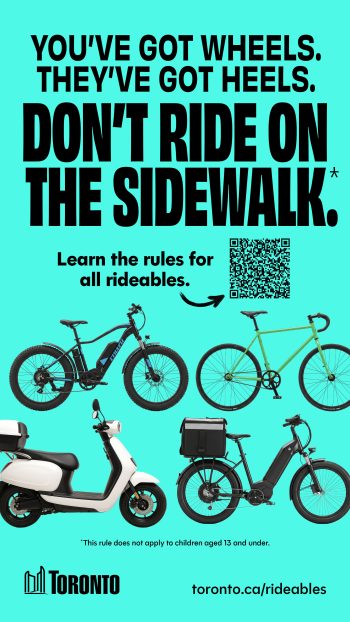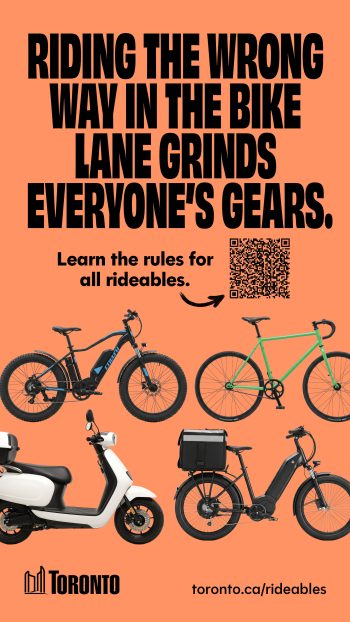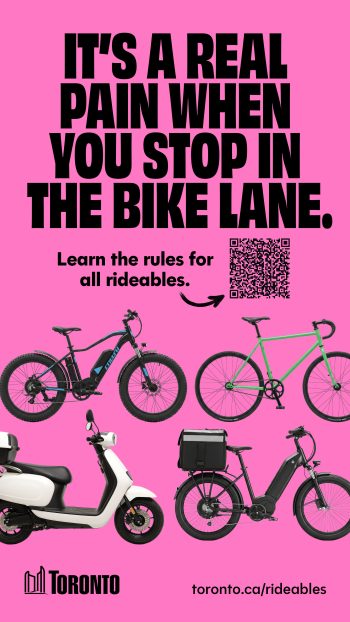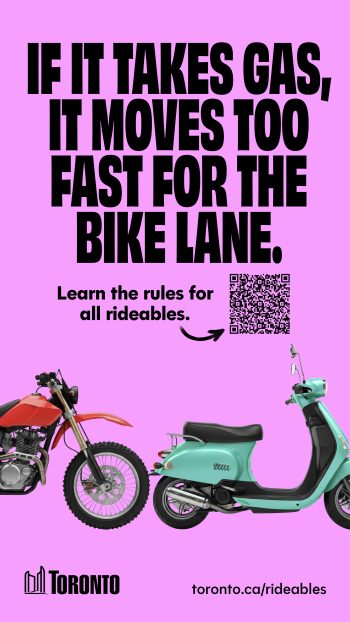
Lightweight, personal, and often electric modes of transportation—like bikes and e-bikes—are becoming a key part of how people get around the city. Whether you’re riding for fun, commuting, or making deliveries, it’s up to you to ride smart, stay legal, and respect those around you.
Toronto’s sidewalks, bike lanes, and roads are shared by thousands of people every day. To keep our streets safe and welcoming for everyone, the City launched a campaign encouraging riders to know the rules, follow them, and show respect for others.
Know the rules for using electric scooters, e-bikes, and other rideables.
You’ve got wheels. They’ve got heels. Don’t ride on the sidewalk.

Sidewalks are designated for pedestrian use. E-bikes or other rideables can be faster, larger, and heavier. They are often quiet and may go undetected when approaching from behind. This endangers vulnerable pedestrians, including seniors, children, and people with disabilities.
Riding the wrong way in the bike lane grinds everyone’s gears.

Riding against the flow in bike lanes confuses, frustrates and endangers other riders. It increases the risk of head-on collisions and may force riders into car traffic to avoid you.
It’s a real pain when you stop in the bike lane.

Blocking the bike lane, even for just a minute, forces riders to merge into live traffic or stop behind you. This puts people at risk and disrupts the safe use of cycling infrastructure.
If it takes gas, it moves too fast for the bike lane.

Gas-powered mopeds are not permitted in Toronto’s bike lanes. They are faster, heavier, and should be operated on the roadway with other vehicles to comply with provincial and city standards.